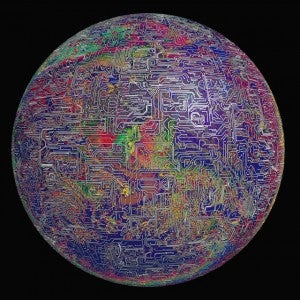Recruiting Tech Innovators to Find Climate Solutions
 America is in the midst of two booms: one in sensor technology and another in natural gas. Recent innovations—specifically advancements in drilling and hydraulic fracturing technologies—have dramatically increased the nation’s access to reserves of natural gas. While this influx of new technology has altered the energy industry, the resulting large-scale development has brought with it some real environmental and climate risks. Now is the time for the same ingenuity that transformed America’s energy landscape to help identify solutions to reduce the impacts caused by increasing supplies of natural gas.
America is in the midst of two booms: one in sensor technology and another in natural gas. Recent innovations—specifically advancements in drilling and hydraulic fracturing technologies—have dramatically increased the nation’s access to reserves of natural gas. While this influx of new technology has altered the energy industry, the resulting large-scale development has brought with it some real environmental and climate risks. Now is the time for the same ingenuity that transformed America’s energy landscape to help identify solutions to reduce the impacts caused by increasing supplies of natural gas.
Just this last month, two innovator programs were announced – one led by Environmental Defense Fund (EDF) and another from the U.S. Department of Energy’s Advanced Research Projects Agency-Energy (ARPA-E) – both are focused on developing new technologies capable of minimizing methane emissions from the natural gas supply chain. The programs are different but complementary and together signal there is momentum building to engage the best and brightest innovators to help address a consequential component of the climate issue.
Methane, a powerful greenhouse gas, is at least 84 times more potent than carbon dioxide at warming the planet over the first 20 years it’s released into the atmosphere, and it’s being lost all along the natural gas supply chain. That’s not only wasting product (methane is the main ingredient in natural gas), but it is worsening climate change. Further, recent data on emissions rates from oil and gas infrastructure confirms that the industry is not holding methane loss rates to a minimum. The latest study, for example, found methane emissions in Colorado’s largest oil and gas producing region are significantly higher than had been previously estimated. Another study from Pennsylvania found methane emissions from the drilling process itself could be up to a 1000 times higher than U.S. EPA’s estimate of average release rates from this one process.
Methane emissions are a widespread problem and there is a clear need for regulatory action to use existing technologies to curb emissions. At the same time, we also need increased innovation to enhance our ability to quickly identify when and where methane emissions are happening. It would be a major win for local communities and the environment to be able to achieve even greater cost-effective emission reductions than current technology would permit. This is why EDF initiated the “Methane Detectors Challenge.”
A joint effort between EDF and five oil and gas companies, the Methane Detectors Challenge presents an opportunity to harness the power of new technologies so they can be part of tomorrow’s climate solutions. EDF is hoping to catalyze a tech movement around next-generation air pollution monitors that can rapidly detect methane leaks in oil and gas operations. Participating innovators will have the opportunity to have their designs and equipment independently tested by Southwest Research Institute, with potential to have their products piloted by industry members of the challenge as early as 2015. Industry partners in the Methane Detectors Challenge seek to deploy new sensing technology as quickly as possible, and select participating companies have committed to purchase viable technology when it is available. If we can successfully harness these new technologies, it will allow rapid detection and repair of methane leaks more quickly, thus reducing emissions of methane and other associated hydrocarbons into the air. Like the carbon monoxide detectors that protect us in our homes—methane detectors can revolutionize leak detection and repair, protecting air quality and the climate.
The clock is ticking
Time is of the essence. Data from the Intergovernmental Panel on Climate Change suggest about half of the global warming we will experience over the next 20 years will occur as a result of short-term pollutants like methane, so EDF is moving fast. The Methane Detectors Challenge RFP closes June 17 when applications are due, with testing and validation of the technologies slotted to begin later this summer.
If we harness the sensor revolution now, we can reduce emissions of short-lived climate pollutants on an unprecedented scale. We have no time to waste, and our children and their children offer us every incentive to ensure that the pursuit continues for newer and better ways to reduce methane emissions.










